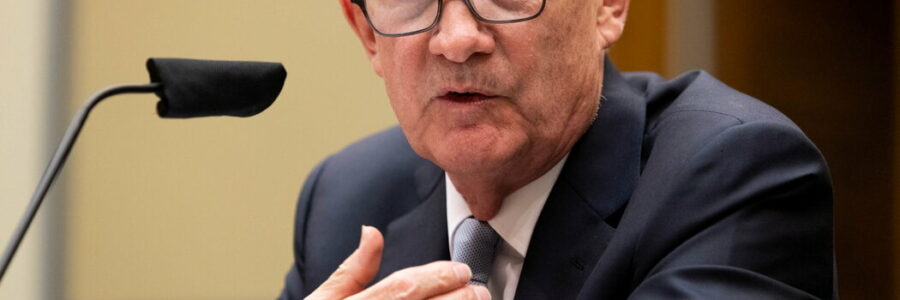
Fed officials were divided over inflation risks and bond-buying when they met in June.
Federal Reserve officials continued to call a recent surge in inflation “transitory” even as it made many of them wary, minutes from their June meeting showed, and policymakers debated details as they began to work toward a plan for moving monetary policy away from its emergency setting.
The conversations — which underlined growing divisions within the central bank at a moment of intense uncertainty — were outlined in minutes of the June 15 -16 meeting, which were released on Wednesday. The June discussion took place before the recent rise of the Delta variant made it clear that coronavirus outbreaks remain a front-and-center risk to the global economy, and also before a recent jump in oil prices.
The details will be scoured by investors who are focused on the prospects for the Fed’s enormous bond-buying campaign, the fate of which is highly dependent on the outlook for growth and inflation. The Fed is also in the spotlight as politicians and some economists fret about the risk of breakaway price increases. Yields on government debt have fallen recently, possibly reflecting concern about growth going forward.
The Fed’s 18 officials, called “participants” in the release on Wednesday, said “economic activity was expanding at a historically rapid pace, led by robust gains in consumer spending,” even as inflation rose faster than expected amid “widespread supply constraints in product and labor markets” and “a larger-than-expected surge in consumer demand as the economy reopened.”
“Several” Fed officials thought supply chain limitations and input shortages would keep prices rising quickly into next year. That caused many to strike a more concerned tone about the inflation outlook.
“A substantial majority of participants judged that the risks to their inflation projections were tilted to the upside because of concerns that supply disruptions and labor shortages might linger for longer and might have larger or more persistent effects on prices and wages than they currently assumed,” the minutes said.
Even so, “several” still cautioned that inflation might still drop to uncomfortably low levels as temporary price gains reverse.
The reading on when and how bond purchases might slow was also anything but unanimous. The Fed is buying $120 billion in government-backed bonds each month, split between Treasury debt and mortgage-backed securities. The purchases stoke economic demand by keeping many kinds of borrowing cheap.
Fed policymakers have been clear that they want to see “substantial further progress” toward their goals of maximum employment and stable inflation that averages 2 percent over time before tapering off that buying. They are now beginning to discuss a plan for the “taper,” a conversation that the minutes said would happen over “coming meetings.”
Officials “generally judged that, as a matter of prudent planning, it was important to be well positioned to reduce the pace of asset purchases, if appropriate, in response to unexpected economic developments,” the minutes said.
But how that should happen was a topic of debate: “Several” prepared to slow mortgage-backed bond buying sooner or faster than Treasury bond-buying, given how hot the housing market has become. Others saw no need to differentiate.
Central bank officials are also holding their policy interest rate at near-zero, where it has been since March 2020, to try to coax the economy back to health. The Fed has set a higher standard for raising interest rates from rock bottom: They want the economy to return to full employment and they want to have solidly achieved their inflation goal.
A set of economic projections released after the June meeting showed that officials increasingly expect to achieve those standards in the coming years. More than half projected two interest rate increases in 2023, and the share expecting rate increases as soon as next year increased.
A “few” officials “mentioned that they expected the economic conditions set out in the committee’s forward guidance for the federal funds rate to be met somewhat earlier than they had projected in March,” the minutes said.
But “several” said that “uncertainty around the economic outlook was elevated and that it was too early to draw firm conclusions about the paths of the labor market and inflation.”
Source: Read Full Article